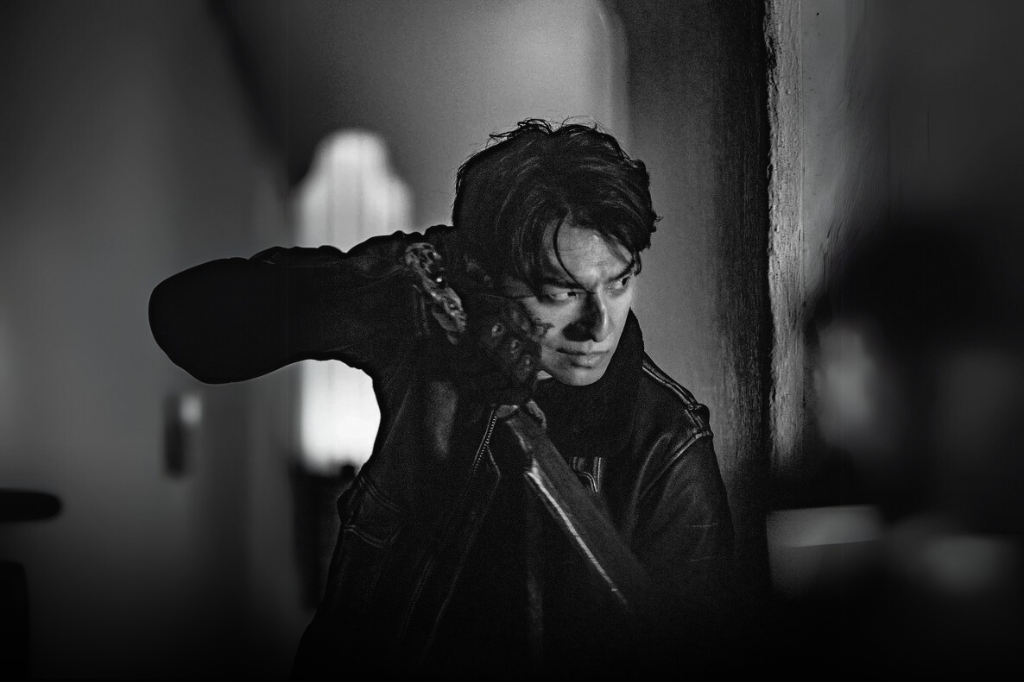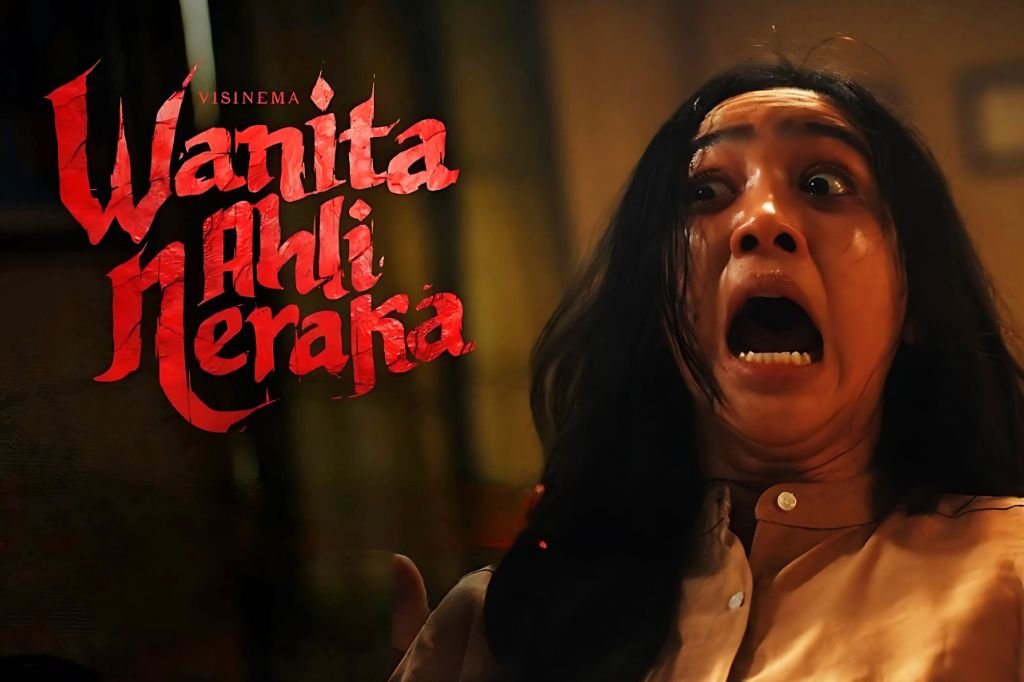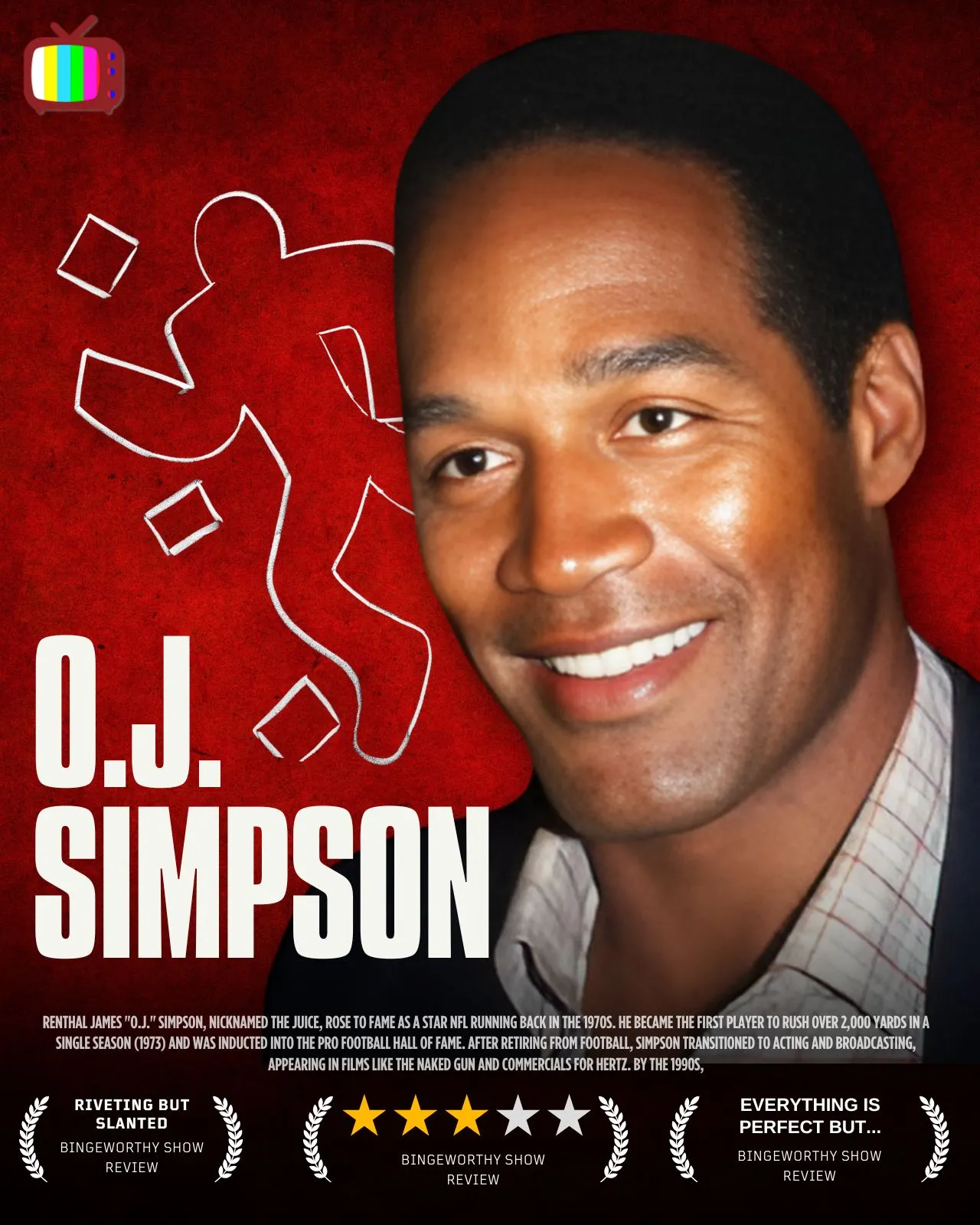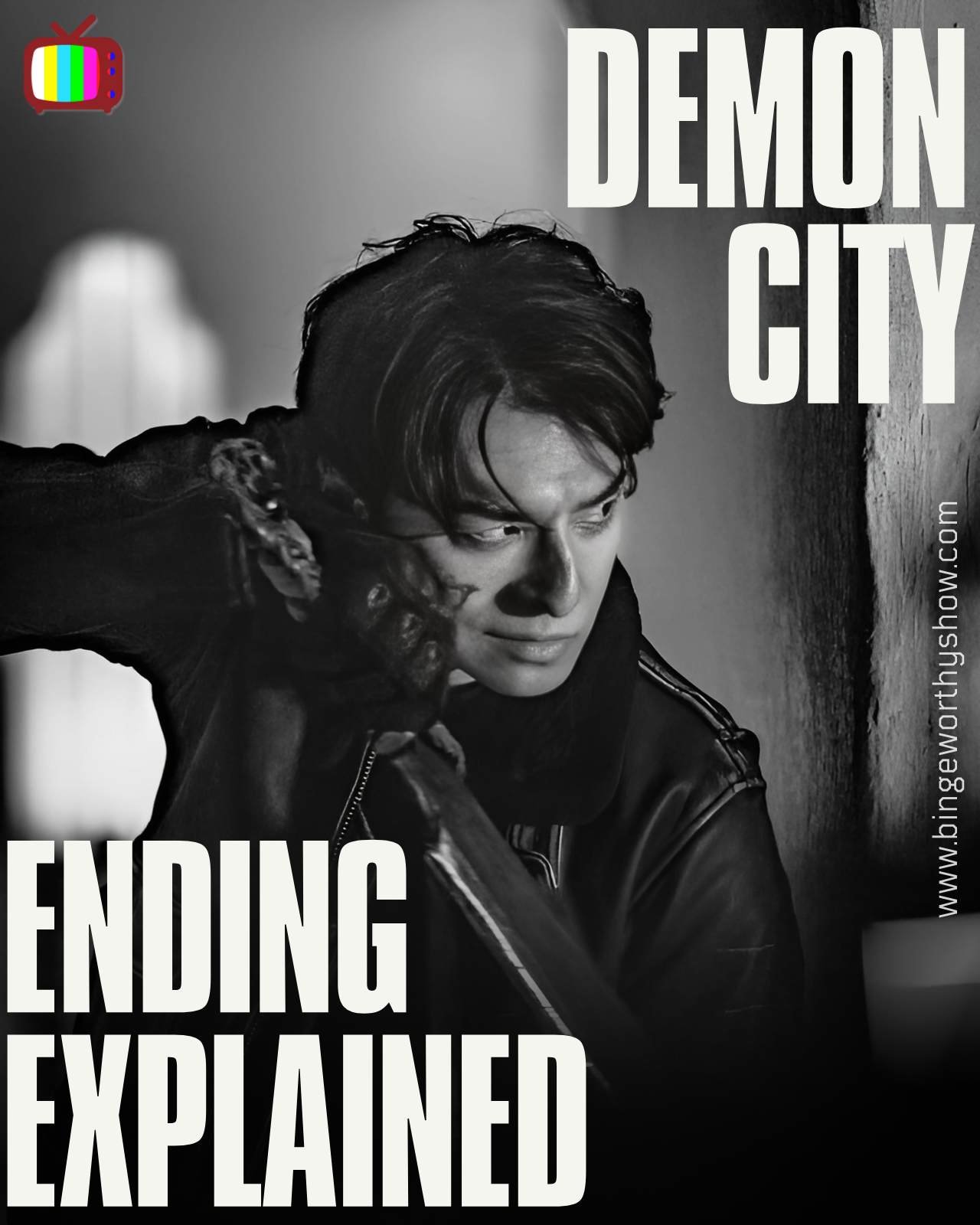Now Reading: Demon City Netflix Review (2025) – A Blood-Soaked Revenge Thriller Unleashed
-
01
Demon City Netflix Review (2025) – A Blood-Soaked Revenge Thriller Unleashed
Demon City Netflix Review (2025) – A Blood-Soaked Revenge Thriller Unleashed

Demon City (2025) is the latest international action film to hit Netflix, delivering a brutal blend of revenge and style. In this Demon City Netflix review, we’ll explore how this Japanese live-action adaptation of a manga combines the spirit of Eric Draven from The Crow with the relentless vengeance of John Wick. Starring popular actor Toma Ikuta in a near-silent performance, Demon City promises intense fights, a dark urban atmosphere, and over-the-top violence. But does the film’s visceral action compensate for its thin storyline? Let’s dive into what makes Demon City both a thrilling ride and a potentially frustrating experience for viewers.
Table of Contents
The Story

Set in the fictional Shinjo City, Demon City centers on Shuhei Sakata (Toma Ikuta), a legendary hitman known for his deadly efficiency. Just as Sakata decides to leave his life of crime and settle down with his beloved wife Aoi and young daughter Ryo, fate takes a cruel turn. After completing one last job—taking out a yakuza boss—Sakata finds his own family targeted by a mysterious organization called Kimen-gumi, whose members don eerie demon masks. In a night of betrayal, the masked gang murders his wife and child, framing Sakata for the crime and brutally shooting him in the head.
Don’t Miss These
- If you want to watch something light humour this week – Binge watch this
- I dare you, you definitely face this problem with Netflix! – Here’s the solution
- If you miss this show i dare you will regret – Check Here
- Do you know the Origins story of Squid Game’s Creepy New Doll Chul-Su – Read Here
Miraculously, Sakata survives the execution-style shot but falls into a coma. Twelve years later, he awakens and is released from a medical prison, only to find his city overrun by the same sinister Kimen-gumi. The once-sharp hitman is initially a shell of his former self—traumatized, physically weakened, and haunted by loss. However, when the Kimen-gumi attempts to eliminate him yet again, Sakata’s dormant killer instinct explosively reawakens. Fuelled by grief and rage, he embarks on an epic quest for revenge against those masked “demons” who destroyed his life.
The film’s narrative is straightforward and fast-paced, following Sakata as he hunts down members of the Kimen-gumi one by one. Along the way, we learn of a local urban legend: a “demon” that returns to the city every 50 years to wreak havoc. This adds a subtle mythical layer to the story—raising the question of whether Sakata himself has become the city’s fabled demon of vengeance. Without venturing into spoiler territory, it’s safe to say Demon City keeps the plot simple: this is a classic revenge tale at heart. While there are a few twists and revelations in the final act, the movie avoids getting bogged down in complicated subplots. Instead, it maintains a laser focus on Sakata’s bloody path toward justice (or perhaps simply retaliation). The result is an accessible, if somewhat predictable, storyline that drives the action forward at breakneck speed. No major spoilers here – just expect a lot of payback delivered with blades, bullets, and brutality.
The Cast & Characters
| Actor | Character | Role Description |
|---|---|---|
| Toma Ikuta | Shuhei Sakata | The protagonist, a former hitman seeking revenge after waking from a coma. |
| Matsuya Onoe | Ryu Sunohara | The corrupt mayor with a secret criminal empire controlling the city. |
| Masahiro Higashide | Kanta Fuse | CEO of a security company, a sadistic villain with hidden motives. |
| Taro Suruga | Fujita | Sakata’s former ally, helps him recover and return to his deadly ways. |
| Mai Kiryu | Aoi Sakata | Sakata’s wife, tragically killed in the opening act. |
| Ami Touma | Ryo Sakata | Sakata’s daughter, presumed dead but later plays a surprising role. |
| Naoto Takenaka | Haruo Kono | The yakuza boss targeted in Sakata’s final job before betrayal. |
| Takuma Otoo | Detective Kameda | A police officer secretly working with the villains. |

Leading the film is Toma Ikuta as Shuhei Sakata, the tormented ex-hitman. Ikuta delivers an intense physical performance, impressively conveying Sakata’s sorrow and fury mostly through body language and fight choreography rather than words. (In fact, Sakata has very little dialogue; the character lets his weapons do the talking.) Ikuta’s portrayal anchors the film, making Sakata a formidable yet sympathetic protagonist – a man of few words and many lethal actions.
The antagonists are embodied by the shadowy Kimen-gumi, an ensemble of villains each hiding their identity behind a grotesque oni (demon) mask. Notable among them is Matsuya Onoe as Ryu Sunohara, the respectable city mayor who secretly controls Shinjo’s underworld. Onoe exudes a chilling calm as a public figure with a sinister double life. Masahiro Higashide plays Kanta Fuse, a security company CEO with a twisted streak – he’s so deranged that he even raises Sakata’s surviving daughter as if she were his own, all while plotting evil under a friendly facade. These two, along with other Kimen-gumi members (including a corrupt detective and a drug-dealing businessman), form a cabal of evil that feels straight out of a comic book. While each villain has a distinct role in society, the film doesn’t delve deeply into their backstories; they mostly serve as high-value targets for Sakata’s wrath.
On the supporting side, Taro Suruga appears as Fujita, Sakata’s old friend and former partner who helps him regain his footing after waking from the coma. Fujita provides the few moments of camaraderie and dialogue that Sakata gets, although this sidekick role is relatively small. Mai Kiryu portrays Sakata’s wife Aoi with warmth in her brief screen time, giving the hero a poignant motivation. Young actress Ami Touma plays Ryo, the daughter, whose tragic fate anchors the emotional core of the story. Additionally, veteran actor Naoto Takenaka cameos as the yakuza boss Haruo Kono (Sakata’s final hit job before retirement), and Takuma Otoo plays a local cop-turned-informant who adds a bit of intrigue. It’s a sizeable cast, but given the film’s focus on action, many of these characters remain one-dimensional. Still, the actors do a commendable job with the material they have: the heroes are likable enough, and the villains are appropriately loathsome behind their devilish masks.
Action & Cinematography
Where Demon City truly shines is in its action sequences and cinematography. Director Seiji Tanaka (who also wrote the script) approaches the fight scenes with creativity and flair. The combat is intense, hand-to-hand brawls mixed with knife fights, gunplay, and even a massive masakari (battle axe) that Sakata wields to cleave through adversaries. Each confrontation is brutally violent – this film does not shy away from gore. Expect spurting blood, broken bones, and high body counts. The violence is so stylized and over-the-top that it almost feels like a live-action anime at times, which will delight fans of the genre but may make squeamish viewers avert their eyes.
One of the standout aspects of the cinematography is the use of long takes during the fights. Many action scenes are filmed in extended continuous shots, allowing us to clearly follow the choreography as the camera fluidly tracks the combatants. This approach avoids the disorienting quick-cut style often seen in action movies, and instead immerses the audience in the chaos. In one memorable sequence, Sakata battles through a cramped stairwell in a single unbroken shot. The camera weaves around the tight space as bodies drop and blood splatters, creating an exhilarating and almost claustrophobic experience. The choreography, combined with dynamic camera movements, gives this scene (and others) a palpable sense of danger and ferocity. You feel every punch, stab, and gunshot.
The overall filming style and production design contribute to the movie’s gritty atmosphere. Shinjo City is portrayed as a rain-soaked, neon-tinged urban jungle – the perfect backdrop for a violent showdown. The color palette often contrasts the darkness of alleyways with the vivid red of blood, emphasizing the film’s graphic novel roots. Additionally, the sound design and score amp up the excitement: legendary musician Tomoyasu Hotei provides a guitar-driven soundtrack that kicks in during key fights, further energizing the scenes. All these elements make Demon City a visceral feast for action aficionados. Each fight feels distinct and well-crafted, and the cinematography ensures viewers can appreciate the stunt work and martial arts on display. It’s safe to say the action and filming style are the high points of the movie, delivering pulse-pounding entertainment from start to finish.
The Manga Inspiration
Demon City is adapted from the Japanese manga titled “Oni Goroshi” (literally “Demon Slayer” or “Demon Killer”) by Masamichi Kawabe. The comic ran for four years, spanning 15 volumes, and built up a cult following for its ultra-violent revenge saga. Fans of the manga will recognize the film’s core premise and characters – the hitman with a tragic past, the grotesque masked villains, and the legendary demon lore hovering over the city. The movie does an admirable job translating the visual style of the manga to live action: Sakata’s character looks every bit the part of a resurrected assassin, and the masked Kimen-gumi are as creepy and imposing on screen as they were on the page. The blood-soaked action scenes also capture the manga’s unabashed brutality.
However, like many film adaptations of long-running manga, Demon City condenses a lot of story into a 1-hour-47-minute runtime. As a result, certain plot details and character backstories from the source material are simplified or left out. Viewers who haven’t read the manga might find the movie’s world-building a bit thin. For instance, the manga likely delves deeper into the “demon of Shinjo City” legend and the origins of the Kimen-gumi, giving more context to why the villains are so fanatically violent and what they ultimately want. In the film, these aspects are only hinted at. We get the immediate motivation for Sakata’s revenge, but the larger motives of the antagonists remain vague. This is where knowing the source material could fill in some blanks – perhaps the manga elaborates on whether the Kimen-gumi have supernatural ties or if the demon is purely metaphorical.
That said, even without that extra context, the film stands on its own as a lean, mean revenge story. If you’re a manga purist, you may notice changes or omissions (for example, the film’s near-silent protagonist is a bold artistic choice that might differ from the comic). But on the whole, Demon City stays true to the spirit of the manga: it’s violent, stylish, and unrelenting. The differences largely come down to depth – the manga simply had more room to explore its universe. The movie opts to deliver quick, adrenaline-fueled satisfaction instead. In the future, it wouldn’t be surprising if Netflix considered expanding this universe in a series, given the rich material available. For now, though, the film is our main taste of Oni Goroshi in motion.
The Universe & Themes
Despite its title and the ominous legend mentioned within, Demon City isn’t a supernatural horror film – it’s a revenge-fueled action thriller with just a dash of mythology. The “demon” in Demon City can be interpreted in a few ways. On one level, it refers to the masked demons (oni) that the criminal gang wears, symbolizing how evil has overtaken Shinjo City. On another level, it hints at Sakata himself becoming a demonic force of retribution, almost an urban legend come true. The movie teases the notion that every fifty years a great evil rises in the city; in 2025, that evil could very well be the vengeance that Sakata unleashes. This thematic element adds a cool backdrop, even if the film never brings an actual literal demon on screen. (Anyone expecting fantastical monsters or heavy supernatural elements might be surprised that no physical demon ever appears. The horror aspect is more about human monsters and the sheer ferocity of Sakata’s rage.)
The setting of Shinjo City is almost a character in itself. It’s depicted as a corrupt metropolis where crime lords hold power behind respectable fronts (like the mayor’s office or legitimate businesses). This echoes themes seen in many neo-noir and comic-inspired stories – a city rotting from within, awaiting a vigilante or “demon” to clean it up. There’s a subtle commentary here on the idea of vigilante justice: Sakata becomes judge, jury, and executioner because the normal system has failed (indeed, even the police detective in the story is allied with the villains). It raises the question of whether extreme violence can ever be justified when fighting even greater evil. The film doesn’t spend much time moralizing, but the theme is inherent in Sakata’s journey from family man to mythic avenger.
Another theme is the dehumanization of both hero and villains. The Kimen-gumi literally dehumanize themselves with masks, committing atrocities anonymously. Sakata, in turn, almost loses his humanity to become an instrument of revenge – he endures so much damage and keeps going that he seems superhuman, or perhaps inhuman like the demon of legend. This dynamic could have been explored more deeply, but Demon City mostly lets viewers draw these connections on their own. The narrative stays on the surface level of a “kill-or-be-killed” scenario. As a result, the universe and themes serve as stylish window dressing rather than profound commentary. Still, they give the film a unique flavor: part yakuza crime saga, part graphic novel mayhem, with a pinch of folklore to spice things up.
Final Verdict
Demon City delivers exactly what its premise promises: a blood-soaked revenge thriller with nonstop action. If you’re an action junkie, this film’s strong fight choreography and bold cinematography will likely impress you. The spectacle of Toma Ikuta plowing through waves of enemies with guns blazing and axe swinging is undeniably entertaining. The movie’s commitment to long, unflinching action sequences sets it apart from more formulaic Hollywood fight scenes – it feels raw, energetic, and at times thrillingly immersive. In terms of adrenaline and style, Demon City scores high.
On the other hand, the story feels rushed and underdeveloped. The simplistic plot and minimal character development mean that you shouldn’t expect a nuanced narrative or an emotional connection as deep as something like John Wick (which took the time to make us care about its hero’s loss). Demon City opts to race through setup and then spend most of its runtime on combat. This keeps the pacing brisk, but it also means many potentially interesting facets – like the lore of the city, the villains’ motivations, or Sakata’s inner turmoil – remain only lightly touched upon. The film might leave you with questions about the bigger picture, and a feeling that it could have been richer with an extra 30 minutes of world-building or perhaps as a short series.
That said, for viewers in the mood for an over-the-top action experience, Demon City is worth watching. Its flaws in storytelling are balanced out by its strengths in execution (quite literally, given how many executions happen on screen). Think of it as a dark graphic novel come to life: it’s all about the visceral visuals and cathartic payback. The movie doesn’t require much investment or contemplation – you can simply sit back and enjoy the stylish carnage. In the crowded arena of revenge movies, Demon City may not claim the throne, but it certainly makes a memorable entrance with swords drawn. Strong action but a rushed story is the ultimate takeaway. If you temper your expectations and embrace the ride for what it is, Demon City can be a hellishly fun 106 minutes of fury. Grab the popcorn (maybe skip the heavy dinner given the gore), and dive into this demon’s den of chaos – it’s a wild if imperfect ride through the dark streets of vengeance.
FAQ: Your Demon City
Is Demon City Netflix Shinjuku worth watching?
Yes—if you prioritize visceral action over narrative depth. The fight choreography and cinematography alone justify a viewing.
What is the Japanese assassin movie on Netflix?
Demon City (2025) is a live-action manga adaptation about a vengeful hitman, now streaming on Netflix.
What happens to the main character’s family?
Tragically, Sakata’s wife and daughter are killed by the Kimen-gumi in the film’s opening act, setting him on a path of vengeance.
Found this helpful? Let us know in the comments! Bookmark this page for quick access, and keep binge-watching your favorite shows hassle-free. 🍿



























